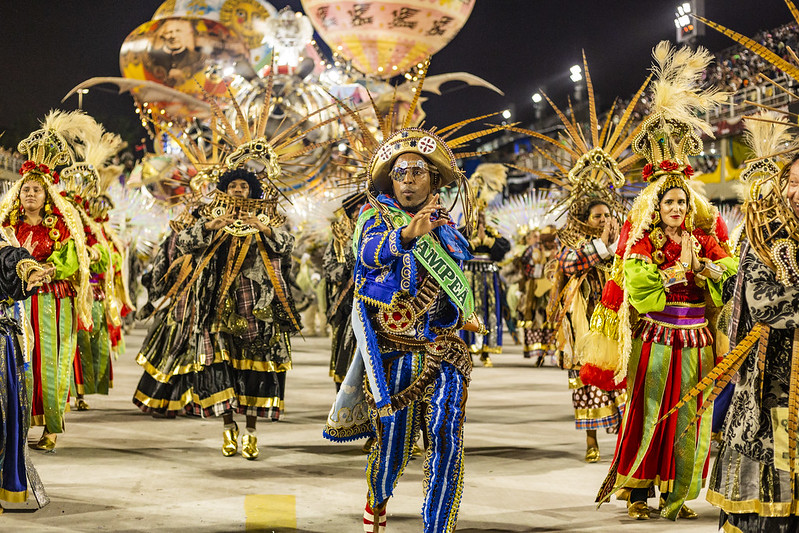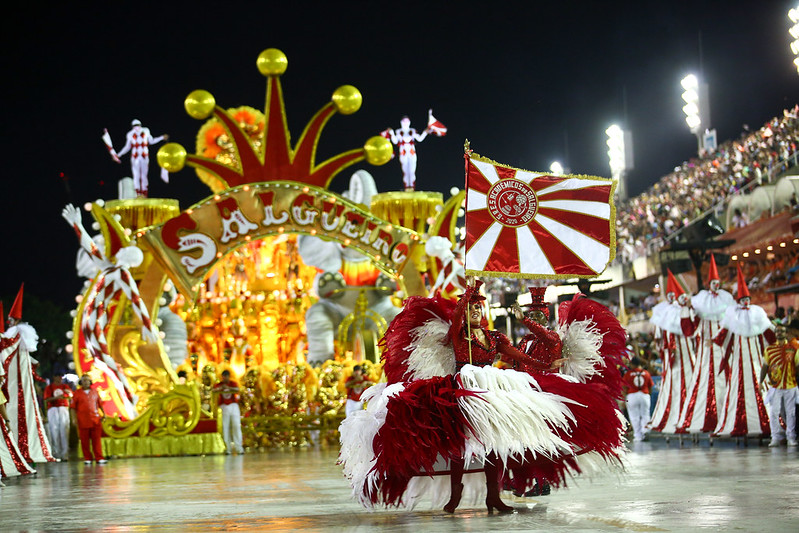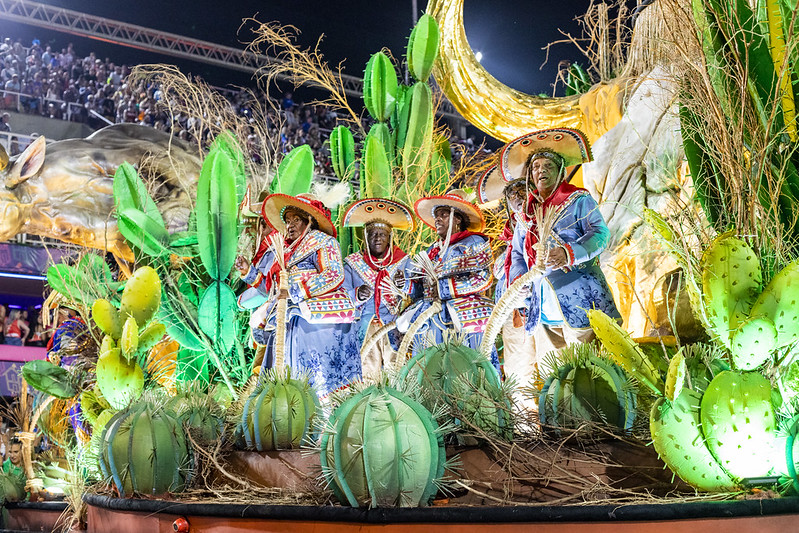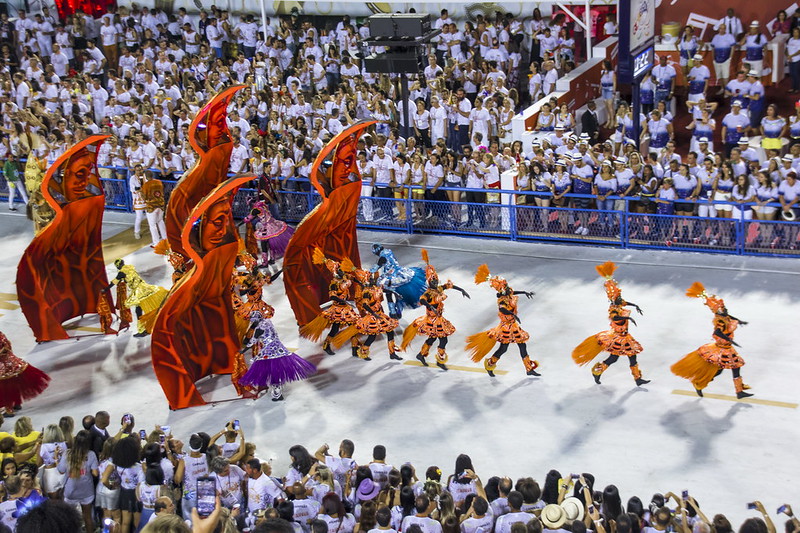Carnaval do Rio de Janeiro
The Dance of Color and Joy the World Dreams Of
2026/02/12
Every February, the city of Rio de Janeiro is swept up in the frenzy of Carnaval. For five days, samba rhythms echo through the streets, costumes adorned with feathers and sequins sparkle under the sun, and the aroma of street food mingles with the salty Atlantic breeze. Whether it’s your first time or you’re a lifelong carioca, everyone becomes part of the world’s largest street party—where anyone can be the star of the show.
The main events are held at the Sambadrome (the dedicated samba stadium) and throughout the city, with over two million participants each day. Music lovers, dance enthusiasts, photographers, partygoers—everyone can experience the true heartbeat of Brazil in this dreamlike celebration.
Main Attractions
Samba Parade at the Sambadrome
The highlight of Carnaval is the Samba Parade at the Marquês de Sapucaí Sambadrome. Rio’s top samba schools compete with up to 4,000 dancers, gigantic floats, and costumes lavishly adorned with feathers, sequins, and rhinestones. The thunder of drums, the roar of the crowd, and the swirl of color and movement along the 700-meter parade avenue are simply breathtaking.
Blocos de Rua (Street Parties)
Across Rio, more than 500 blocos—street parties—fill squares and avenues. Each has its own theme and band, with music ranging from samba and funk to pop and traditional carnival songs. Confetti, laughter, the scent of beer and caipirinhas, and grilled meat fill the air as people dance until dawn.
Key Events
Don’t miss the Children’s Samba Parade, the crowning of the Carnival King (Rei Momo) and Queen, or the Champions’ Parade by the winning samba schools. Street markets, costume contests, and after-parties keep the festivities going long after the main events.
Costumes and Decorations
Carnaval is a visual feast. Dancers wear extravagant feathered headdresses and sequined bodysuits, while spectators join in with superhero costumes and sparkling masks. The Sambadrome is decorated with banners and lights, and even trees and lampposts are wrapped in ribbons and streamers. The feel of sequins, the weight of feathers, and the cool touch of body paint are all part of the experience.
Traditional Food & Drink
Street stalls serve Brazilian favorites like feijoada (black bean and meat stew), pastel (fried pastry), churrasquinho (grilled meat skewers), and pão de queijo (cheese bread). The fresh, citrusy scent of caipirinhas (lime and cachaça cocktails), ice-cold beer, and snacks like brigadeiros (chocolate truffles) and coconut sweets are all part of the festivities.
Cultural and Historical Background
The origins of Rio de Janeiro’s Carnival date back to the Portuguese colonial era. In the 18th and 19th centuries, Portuguese immigrants brought with them “Entrudo,” a pre-Lenten festival involving water fights, street games, and masquerade balls. As Rio’s population became more diverse, these European customs blended with the rhythms, dances, and costumes of enslaved Africans, as well as Indigenous traditions, creating unique music and street culture—the foundation of today’s Carnival.
In the early 20th century, samba emerged from Afro-Brazilian communities in Rio’s favelas and quickly became the heart of Carnival. The first samba schools (Escolas de Samba) were founded in the 1920s, turning Carnival into a grand competition of music, dance, and costume design. In 1984, architect Oscar Niemeyer designed the Sambadrome, giving the parades a dedicated stage and propelling Carnival to worldwide fame.
Today, Carnival is one of the world’s largest and most famous festivals, attracting millions of tourists and symbolizing Brazilian identity, creativity, and social unity. For many cariocas (Rio locals), Carnival is the most important time of the year—a chance to forget daily worries, dance with neighbors and strangers, and celebrate diversity. It is a living symbol of Rio’s spirit, resilience, and joy.
Participant Voices
I came from Germany to experience the legendary Rio Carnival. I spontaneously joined a bloco (street party) on the hills of Santa Teresa. Before I knew it, locals were painting my face and arms with glitter, and I was sparkling from head to toe! I linked arms with strangers, singing samba and carnival songs at the top of my lungs, laughing and dancing nonstop. The scent of caipirinhas and beer drifted through the streets, colorful confetti swirled in the air, and I felt a sense of freedom and unity as if I were dreaming. The exhilaration of that moment—the feeling of hearts connecting regardless of nationality or age—is something I’ll never forget.
Fun Facts
- Some samba school costumes can weigh over 15 kilograms and take months to make.
- The Sambadrome was designed by architect Oscar Niemeyer and completed in 1984.
Festival Dates
- 2026: 2026/02/13 - 2026/02/18 (source: Rio Carnival official website)
- 2025: 2025/02/28 - 2025/03/05 (source: Rio Carnival official website)
- 2024: 2024/02/09 - 2024/02/14 (source: Rio Carnival official website)
- 2023: 2023/02/17 - 2023/02/22 (source: Rio Carnival official website)
- 2022: 2022/02/25 - 2022/03/02 (source: Rio Carnival official website)
- 2021: 2021/02/12 - 2021/02/17 (source: Rio Carnival official website)
- 2020: 2020/02/21 - 2020/02/26 (source: Rio Carnival official website)
- 2019: 2019/03/01 - 2019/03/06 (source: Rio Carnival official website)
The Rio de Janeiro Carnival is held every February or March, with the main parades at the Sambadrome and street parties throughout the city.
The event schedule is subject to change. Please check the official website for the most up-to-date information.
Information
| Name | Carnaval do Rio de Janeiro |
| Country | Brazil |
| Area | Rio de Janeiro |
| Date | 2026/02/12 |
| Link |
Upcoming Festivals
Dia de la Virgen de Guadalupe Mexico
A Festival Weaving Faith, Fervor, and Mexican Identity
2025/12/11L'Escalade Switzerland
Geneva’s Grand Winter Festival of Courage, Chocolate, and Community
2025/12/12Umkhosi Wokweshwama South Africa
The Zulu First Fruits Festival—A Sacred Celebration of Land, Ancestors, and Renewal
2025/12/12Lucia Festival (St. Lucia's Day) Sweden
A Festival of Light Illuminating the Nordic Darkness
2025/12/15Las Posadas Mexico
The Luminous Quest for Sacred Shelter
2025/12/22Noche de Rabanos (Night of the Radishes) Mexico
A celebration blending art, farming heritage, and cultural traditions
2025/12/23Chant of the Sybil on Majorca Spain
A Medieval Prophecy Echoes Through Majorcan Christmas
2025/12/23‘Hatajo de Negritos’ and the ‘Hatajo de Pallitas’ Peru
A Christmas Festival of Rhythm, Faith, and Afro-Andean Heritage in Peru’s Ica Region
2025/12/24Harbin International Ice and Snow Sculpture Festival China
A Frozen Wonderland Where Art and Adventure Merge
2025/12/24Takanakuy Peru
The Andean Festival of Reconciliation by Fist—How Confrontation Creates Year-End Peace and Bonds



